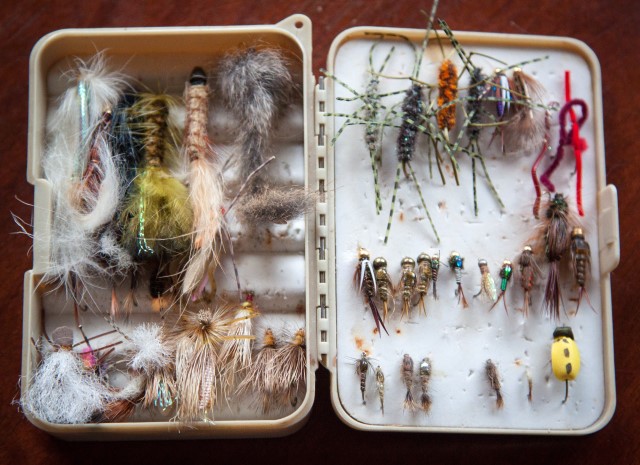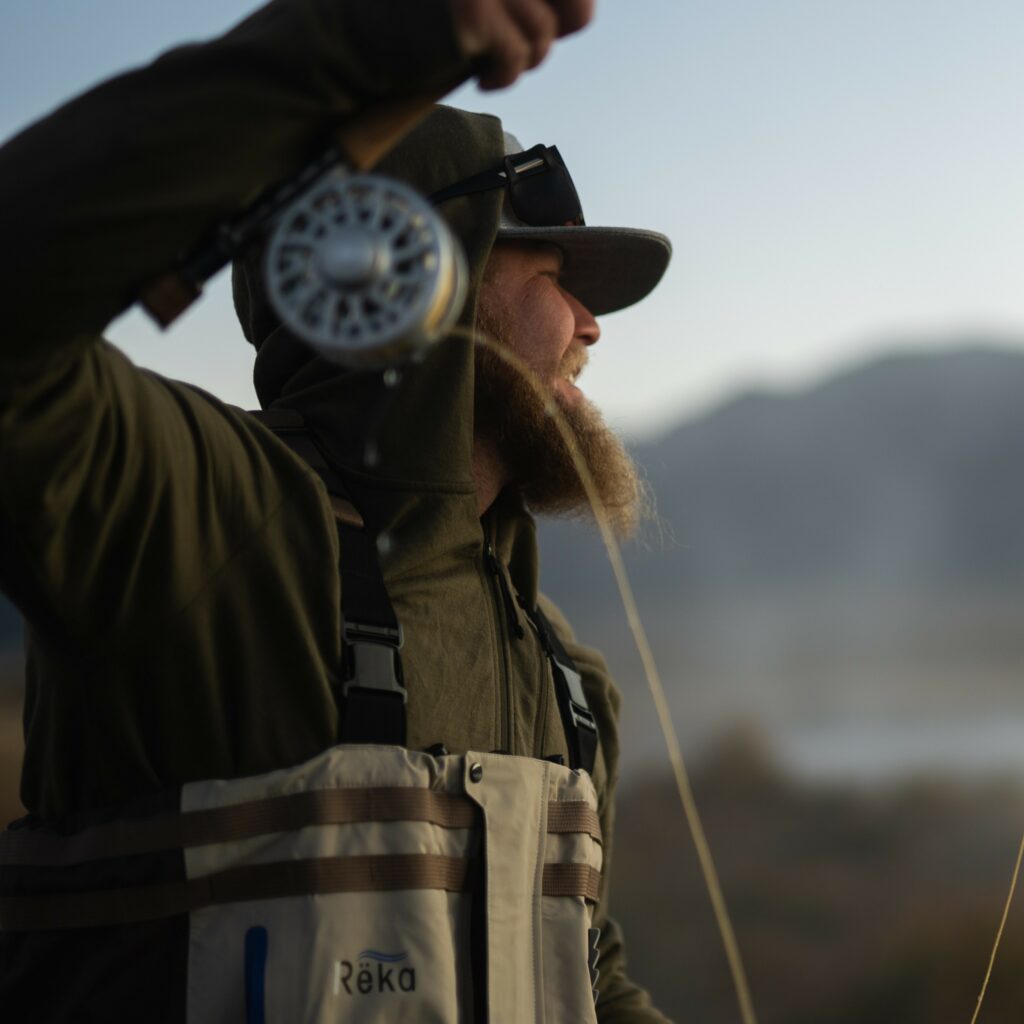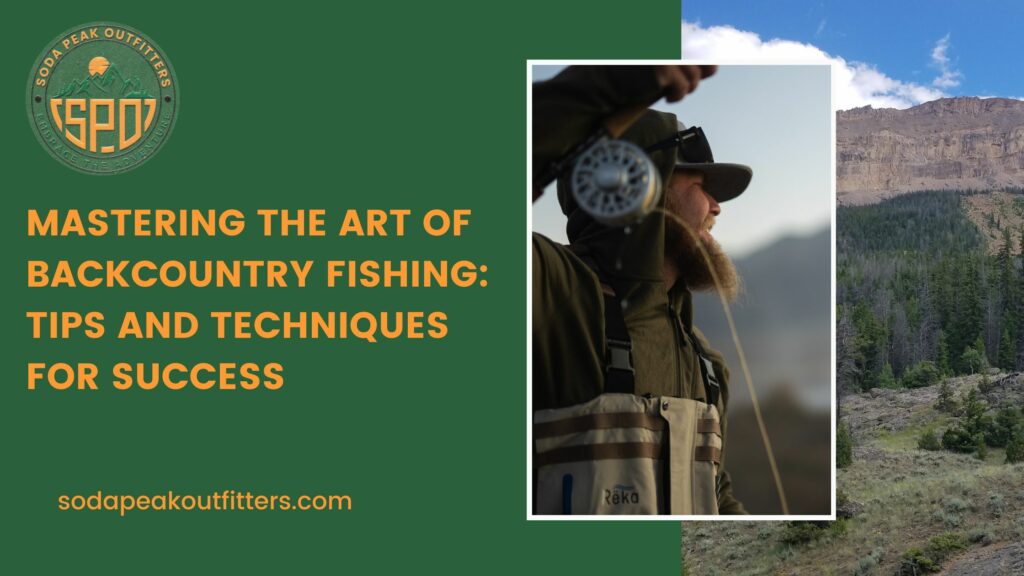Fishing is more than just a recreational activity, it is an art form that requires skill, patience, and knowledge. While many anglers prefer to fish in well-stocked lakes and rivers, there is a growing community of adventurers who seek out the challenge and thrill of backcountry fishing. Backcountry fishing involves venturing deep into remote and untouched areas, where the fish are abundant and the scenery is breathtaking.
However, with this adventure comes a whole new set of challenges, making it essential for anglers to master the art of backcountry fishing. In this article, we will explore the tips and techniques that will help you become a successful backcountry angler. From gear selection and safety precautions to reading the water and casting techniques, we will cover all aspects of backcountry fishing to help you navigate these uncharted waters with confidence and skill. So, whether you are a seasoned angler looking for a new challenge or a beginner eager to learn the ropes, read on to discover the secrets to mastering the art of backcountry fishing.
Table of Contents
Plan ahead for remote locations
When it comes to backcountry fly fishing and wilderness fishing, planning ahead for remote locations is crucial. These areas are often far from civilization, with limited access to supplies and services. To ensure a successful and enjoyable fishing trip, it is important to prepare in advance.
- First, research the specific location you will be visiting, including any regulations or permits required.
- Familiarize yourself with the local weather patterns and pack appropriate clothing and gear.
- Additionally, stock up on essential supplies such as food, water, and camping equipment.
- It is also essential to inform someone of your itinerary and expected return date for safety purposes.
By taking these precautions and planning ahead, you can maximize your experience in remote fishing locations and have a memorable adventure.
Less gear, more versatility key
In the world of backcountry fishing, the key to success lies in embracing the mantra of “less gear, more versatility.” Instead of lugging around a plethora of specialized equipment, opting for versatile tools and techniques will enable you to adapt to various fishing situations.
In the world of backcountry fishing, the key to success lies in embracing the mantra of “less gear, more versatility.” Instead of lugging around a plethora of specialized equipment, opting for versatile tools and techniques will enable you to adapt to various fishing situations.

In the world of backcountry fishing, the key to success lies in embracing the mantra of “less gear, more versatility.” Instead of lugging around a plethora of specialized equipment, opting for versatile tools and techniques will enable you to adapt to various fishing situations.
Invest in a high-quality, lightweight fly rod that can handle a range of fishing conditions, allowing you to target different species and adapt to changing environments. Focus on mastering a few essential fly patterns that have proven effective in different scenarios, rather than carrying an extensive selection. By streamlining your gear and focusing on versatility, you’ll be able to navigate the challenges of backcountry fishing with ease and increase your chances of a successful catch.
Mastering the art of casting
To truly master the art of casting in the backcountry, it is essential to focus on technique and practice. One of the most important tips for backcountry fly fishing is to prioritize accuracy over distance. In the often tight and confined spaces of the wilderness, casting with precision is crucial to avoid snagging on trees or rocks.
Take the time to practice casting in different scenarios, such as casting under overhanging branches or in windy conditions, to improve your accuracy and adaptability. Additionally, mastering the roll cast technique can be invaluable in backcountry fishing, allowing you to make precise and delicate presentations without the need for a backcast. By honing your casting skills and being adaptable in different backcountry fishing situations, you will greatly increase your chances of success while enjoying the serenity of wilderness fishing.
Be mindful of surroundings always
When venturing into the backcountry for fishing, it is essential to always be mindful of your surroundings. This is one of the key tips for backcountry fly fishing and wilderness fishing. Being aware of your surroundings helps you navigate through potentially challenging terrains, such as uneven surfaces or slippery rocks. It also allows you to identify any potential hazards, such as overhanging branches or hidden obstacles in the water.
By paying attention to your surroundings, you can ensure your safety and prevent any accidents that could disrupt your fishing experience. Additionally, being mindful of your surroundings also means respecting the ecosystem and wildlife around you. Avoid disturbing nesting areas or sensitive habitats, and follow guidelines for catch and release practices to preserve the natural beauty of the backcountry for future generations of anglers.
Patience and persistence pays off
In the world of backcountry fly fishing and wilderness fishing, patience and persistence are essential virtues that can greatly contribute to your success. It is important to remember that fish in these remote and untouched areas have not been subjected to the same levels of fishing pressure as those in more accessible locations. With patience, you can observe their behavior, identify feeding patterns, and adjust your fishing techniques accordingly.
It may take numerous casts and attempts before you finally hook that elusive trout or land a prized catch, but the key is to stay persistent and not give up. By honing your skills, adapting your strategies, and maintaining a positive mindset, you will eventually reap the rewards of your efforts and master the art of backcountry fishing. Remember, in the wilderness, the journey is just as rewarding as the destination. So, embrace the challenges, embrace the process, and let patience and persistence guide you to unparalleled fishing experiences.
Know local regulations and restrictions

It is crucial for any angler venturing into the backcountry for fly fishing or wilderness fishing to be well-informed about local regulations and restrictions. Each region and body of water may have specific rules and guidelines in place to protect the environment and ensure sustainable fishing practices. These regulations typically cover areas such as catch limits, size restrictions, fishing seasons, and bait and gear restrictions.
By familiarizing yourself with these rules, you not only demonstrate respect for the natural resources you are enjoying but also avoid potential fines or penalties. Additionally, knowing the regulations allows you to fish responsibly, contributing to the preservation and conservation of these pristine backcountry fishing areas for future generations of anglers to enjoy.
So, before casting your line, take the time to research and understand the local regulations and restrictions governing your desired fishing destination.
Leave no trace, respect nature
To fully embrace the art of backcountry fishing and become a responsible angler, it is imperative to adopt the principle of “Leave no trace, respect nature.” This philosophy emphasizes the importance of minimizing our impact on the environment and preserving the natural beauty of the wilderness areas we explore.
When engaging in backcountry fly fishing or wilderness fishing, it is crucial to follow certain guidelines such as packing out all trash and leaving the area as you found it. Avoid disturbing wildlife and their habitats, as well as sensitive plant life. Keeping the noise level to a minimum allows for a more peaceful and undisturbed experience, not only for yourself but also for other outdoor enthusiasts. By adhering to these principles, we can ensure that future generations will have the opportunity to indulge in the wonders of backcountry fishing and relish the pristine landscapes that nature has to offer.
Final Thoughts
Backcountry fishing may seem intimidating, but with the right knowledge and techniques, it can be a rewarding and exciting experience. By following these tips and techniques, you can master the art of backcountry fishing and become a successful angler in even the most remote and rugged locations. Remember to always prioritize safety, respect the environment, and have patience and perseverance. So pack your gear, get out there, and enjoy the thrill of backcountry fishing!
FAQ
How can one effectively plan and prepare for a backcountry fishing trip, considering factors such as gear, safety, and logistics?
To effectively plan and prepare for a backcountry fishing trip, it is important to consider several factors. First, ensure you have the right gear, including fishing rods, reels, tackle, and appropriate clothing. Research the fishing regulations for the specific area you plan to visit and obtain any necessary permits. Prioritize safety by bringing a first aid kit, navigation tools, and emergency communication devices. Familiarize yourself with the terrain and weather conditions of the backcountry, and plan accordingly. Consider logistics such as transportation, camping accommodations, and meal planning. Finally, inform someone of your itinerary and expected return time for added safety.
What are some advanced techniques for casting and presenting bait or lures in backcountry fishing situations?
Some advanced techniques for casting and presenting bait or lures in backcountry fishing situations include mastering the roll cast, sidearm cast, and bow and arrow cast. These casts allow for precise placement of bait or lures in tight spaces or under obstacles. Additionally, using a longer rod, lighter line, and smaller lures can help in making more accurate and delicate presentations. Being aware of the wind direction and adjusting the casting angle accordingly can also improve casting distance and accuracy. Lastly, incorporating techniques like mending and line management can help in achieving a natural and enticing presentation of bait or lures.
How can one adapt to the unique challenges and conditions of backcountry fishing, such as limited access to amenities and unpredictable weather?
To adapt to the unique challenges and conditions of backcountry fishing, it is important to be well-prepared and flexible. This includes bringing essential supplies like food, water, and emergency equipment, as well as checking weather forecasts beforehand and being prepared for sudden changes. It is also crucial to have knowledge of the area and its regulations, as well as good navigation skills. Additionally, being adaptable and willing to adjust plans based on the conditions and the availability of amenities is essential.
What are some strategies for finding and targeting specific fish species in backcountry fishing areas, and how can one increase their chances of success?
Some strategies for finding and targeting specific fish species in backcountry fishing areas include researching the habitat and behavior of the species, using the right fishing gear and bait, and observing the water conditions and surroundings for clues. One can increase their chances of success by being patient, persistent, and adaptable, as well as by learning from local experts or guides. Additionally, practicing stealth and using techniques such as casting accurately and varying retrieval speed can also enhance the chances of attracting and catching specific fish species in backcountry fishing areas.

